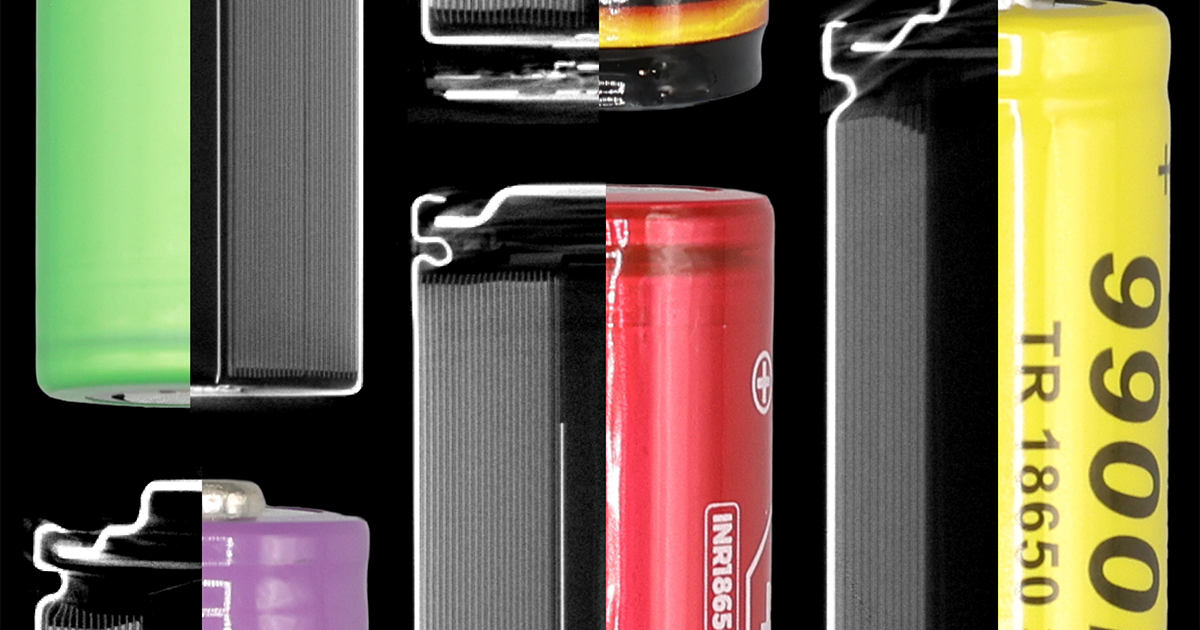- 18 Posts
- 1.14K Comments

 3·22 days ago
3·22 days agoMeh. I’m holding out for wretched hive of scum and villainy.

 5·22 days ago
5·22 days agoCosmological restaurant. It’s at the end of the universe.

 1·4 months ago
1·4 months agoIf anyone cares, this light was on sale for $10 last week (not any more) and I got one along with an H25L. The TS10 SG is great, smaller than I expected and a terrific value at $10. I will EDC it for a while. For some reason I thought it came with a USB-rechargeable 14500 but it’s the TS10 Max that comes with a USB cell. It’s ok though. I will probably get a D3AA sooner or later but this will do me for now.
I also got an HD10 a while back and I like that a lot too. Unfortunately it’s being discontinued, maybe in favor of the non-Anduril HD12. So we’ll again be in a situation of having no available Anduril headlamps with USB charging. Meh.

 30·4 months ago
30·4 months agoIf they own houses that is public info.

 3·5 months ago
3·5 months agoThe manufacturer web site is almost unusable and doesn’t have an ordering button. There’s a “Where to buy” link way at the bottom, that doesn’t work for me. Web search shows this is about a US$ 200 charger. Ouch. Thanks for the review but yikes. Also I don’t want to install a phone app to use or update the charger. You are right that the missing features being important (PC interface, bidirectional USB charging).

 132·5 months ago
132·5 months agoWTF. What could possibly go wrong. Flip phone here I come.
Sounds like it would be nice if Savannah offered Forgejo hosting.

 4·5 months ago
4·5 months agoOk I used to feel sorry for non-libre streaming software users, but this is now in “one born every minute” territory. Thanks.

 194·5 months ago
194·5 months agoWhat the heck is this thing? Should many of us care?

 1·5 months ago
1·5 months agoHmm ok, though if a security program needs frequent updates, that’s a cause for concern in its own right… :/

 1·5 months ago
1·5 months agoSo do that. You can do that with Signal.
Do you know of anyone doing it? Other people have said there are difficulties.
You wouldn’t register on websites, but you would communicate with them over plaintext. I hope that makes it clearer.
It is ok, in that era (dialup or wired internet) unencrypted http was basically as secure as unencrypted landlne phone calls. People still have unencrypted phone calls all the time. Typicalally sites would show public content (like product pages on an e-commerce site) by http, then switch to https for checkout to protect stuff like credit card numbers. Encrypting everything became important when wifi became widespread. Wifi hotspots would hijack DNS and spoof entire web sites to steal credentials. Also, LetsEncrypt made it possible to bypass the CA scam industry, making https-everywhere more popular. Public awareness also increased due to Snowden’s disclosures.
The RSA encryption patent also expired in 2000. Before that, US website operators were potentially exposed to hassle if they didn’t use a commercial server with an RSA license ($$$). But, it didn’t apply outside the US and FOSS SSL servers existed for those wanting them.

 2·5 months ago
2·5 months agoThose are nice generalities but I think they ignore reality. Jami seems like sort of a side project to its developers. Bug reports often are answered with a suggestion to make sure everyone is running the latest version of Jami, which is often useless advice. Like if you try to call your friend with your new phone and the call doesn’t complete, it’s unhelpful for your phone manufacturer to say your friend should get a new phone. You might be interested in helping fix the problem but your friend just wanted to have a phone conversation and doesn’t want to get dragged into a debugging project. It’s even worse if the other person is not your friend but rather is someone you just met and exchanged numbers with. If you try to follow up with a phone call and there is a problem, GAME OVER. You permanently lose contact with that person. You can’t possibly suggest Jami as a Skype replacement after that happens to you once or twice.
Another thing with comms programs in general is you really can’t debug them with just one computer. Their whole function is to let two computers talk to each other, so you need two computers where you control both ends and ideally control the network as well, so you can insert delays, network faults, etc. If the Android version has trouble talking to the Iphone version, you need both kinds of phones. I’m not sure if Jami’s devs really understand that. I’ve worked on telecom stuff in the past and it’s just the reality of that field.
Yet another (I’m not sure of this) is that Jami is a peer to peer program so I suspect some of the problems revolve around firewall traversal gotchas of various types. I don’t know if there is a cure for this while keeping the basic architectecture intact. I do like it in principle and I know that people get BitTorrent working reliably without too much trouble, so maybe Jami is just missing some trick.
Finally, Jami is pretty old and back in those days, people hadn’t really thought about the subtleties of encrypted group chats. Signal does a better job, and these days there is a standard (RFC 9420) for how to do it (I don’t know if Signal follows this standard). It would be good if Jami were revamped for that, but 1) that would break interoperability again, and 2) I don’t know if it’s workable at all with Jami’s architecture (serverless, using a distributed hash table for peer discovery).
For now I’ve sort of given up on Jami and am trying to figure out what to use instead. It’s unfortunate that the main devs don’t seem to have that much interest in making Jami reliable. Randos like me capable of making small contributions can’t really help much with more involvement from the experts.

 2·5 months ago
2·5 months agoAt least here in the US, lots of mobile phone plans have free or cheap international calls, depending on the countries involved. Example. Some home landline plans also have that. So far that has been enough for me on the few occasions when I’ve wanted to make an international call. If more frequent, I’d use a VOIP provider, maybe Twilio (I’m sure there are others too, but I know Twilio supports this and has a decent API).
VOIP providers will often also sell you inbound phone numbers in the destination country, if you want the other person to be able to call you from their landline without it getting rung up as an international call for them. Those aren’t always so cheap, but there are obvious use cases.

 2·5 months ago
2·5 months agoOh I see. Yeah DVD drives generally use the same SATA interface as hard drives.

 1·5 months ago
1·5 months agoBecause your status updates and messages are encrypted and stored (until retrieved, of course) once for every recipient, and that includes your other devices and their other devices.
I’d like to see a numerical estimate of how much data this is. But, it sounds to me like more reason to want to self-host.
I don’t see any point to rehashing the other stuff. Non-TLS websites mostly went away once DNS spoofing at wifi hotspots became widespread.

 4·5 months ago
4·5 months agoIf you mean a 2.5" drive (laptop sized) then yes you can generally do that. 3.5" drives are usually 1" thick and won’t fit in a slim DVD drive slot.

 2·5 months ago
2·5 months agoThanks. The more I think about it, the more this seems like outright evil behaviour on Signal’s part to pursue user growth, similar to Facebook etc. Imagine that you and your boss are in each other’s contacts for obvious work-related reasons. Do you really want Signal notifying your boss that you registered for Signal? For some of us it’s fine, but in general it seems like a terrible idea.

 1·5 months ago
1·5 months agoYeah I’m on their Discourse forum, but the situation isn’t that great, and it’s unclear to me if the problems are fixable. Particularly when there are incompatibilities between version X and version Y, where both versions are already in the wild. You can’t travel backwards in time to fix those versions, and this (like email clients or telephones) is an application area where you can’t tell people to update their clients all the time. You have to keep things interoperable.
It’s also often inconvenient to reproduce bugs like that in order to diagnose them. If you try to talk to someone over Jami and it doesn’t work, you generally can’t borrow their phone to analyze the issue. If you’re one of the core developers, maybe you have access to a room full of different kinds of phones and OS versions to test with, but a typical user/contributor won’t have anything like that.

 2·5 months ago
2·5 months agoThanks. I’m not a sophisticated Android user and so far have just stayed with installing stuff from F-droid. If the official build matches the F-droid build, that’s great. At some point I want to spend some time bringing up Android build tools, but I have too much other stuff going on right now.







I noticed another review of this light at https://tgreviews.com/2022/07/23/sofirn-d25lr/ that has some useful extra info including a partial teardown photo, and a measurement of the parasitic current at under 1 microamp, very good. I think that review is of an older version of the light, since it has micro USB while mine has USB-C.
My brother had a micro-USB light (now lost) of this series, and it seems to me that the build quality of that light, while not terrible, was worse than the two I have now (H25LR and H25L. So maybe they got better at the time of the switchover. I still highly recommend these lights and don’t really want any more 18650 headlamps unless someone makes a suitable Anduril one.
Another review: https://www.stephenknightphotography.com/post/headlamp-review-sofirn-d25lr